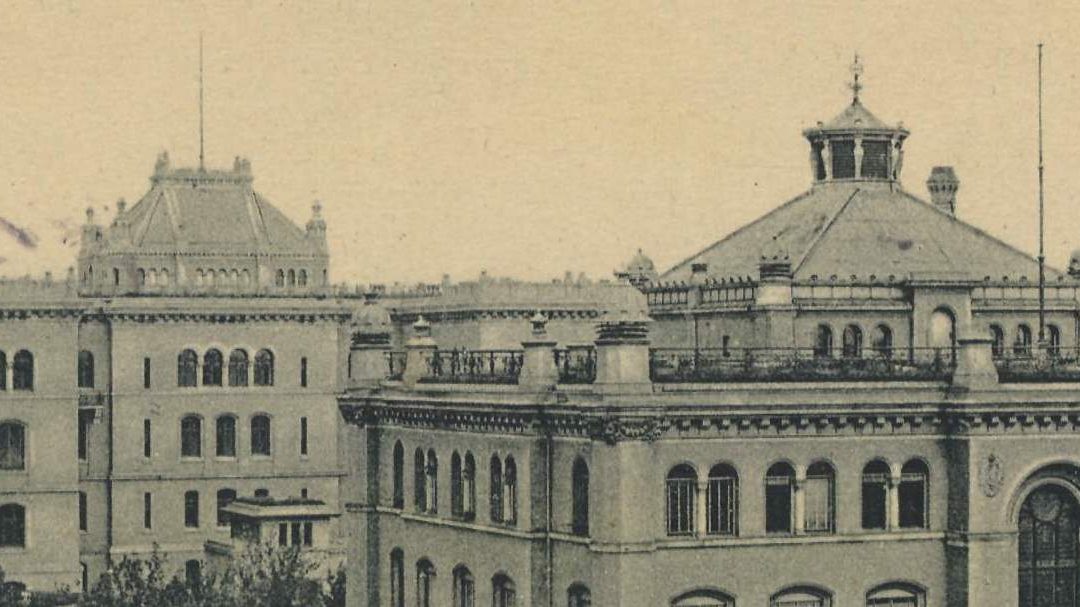—Science emerged as a profession in the nineteenth century, at the same time as a structure of disciplines and specialties was took shape.—
William Whewell (1794-1866) developed a unique academic career in the first half of the nineteenth century. He was the son of a carpenter and soon became interested in questions of natural philosophy and theology. Few people of his social origins managed to access Cambridge in those years and, much less, carry out studies so brilliant as to obtain a position as professor of mineralogy and then philosophy. His intellectual journey developed between humanities and sciences, when the boundaries between the two were blurred and there were many bridges for the frequent transfer of people and ideas. Whewell wrote works of poetry, essays on political economy, books on philosophy, and countless articles on varied topics related to emerging geology and diverse scientific issues. Nowadays, he is remembered, especially in the Anglo-Saxon world, for his work on the history and philosophy of science. He participated in debates about the science of his time and coined various expressions with more or less success. Among those that have remained to this day are ‘anode’ and ‘cathode’ which were popularised by his colleague Michael Faraday.
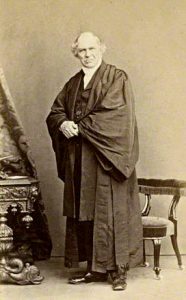
William Whewell according to a daguerreotype from around 1860. Wikimedia.
Another of his successful neologisms was the word ‘scientist’. With this expression, Whewell intended to establish a generic term to name people who developed activities related to science or to ‘natural philosophy’, as it had been called until then. In other languages there were expressions that covered, in various ways and with approximate meanings, this fluid and changing semantic field. For example, in German ‘Natur-Forscher’ (researcher of nature) was used, while in French ‘savant’ was used to define people with specialised training, including areas related to experimental sciences. Whewell suggested ‘scientists’ inspired by other models of his time, such as ‘artist’ or ‘atheist’. He presented his proposals in 1833 at a meeting of the British Association for the Advancement of Science and, although controversial, the term eventually prevailed.
Beyond this fortunate creation, historians like Andrew Cunningham have pointed out that by coining the new term, Whewell was pointing to a deeper shift in the way science is practised. According to Cunningham, it was in those years that there was an emergence of professional careers related to science (with new systems of training and control of professional practice), the creation of new societies, the secularisation of scientific activity (with a clear separation from theology, something that did not happen in Newton’s time) and the association of science with the values of the new emerging middle-class: meritocracy, progress and industry. In other words, many of the characteristics usually associated with modern science emerged in the first decades of the nineteenth century and would be consolidated in the following ones.
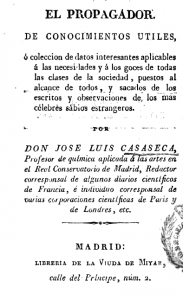
El Propagador de los conocimientos útiles, a popular science magazine edited by the chemist José Luis Casaseca y Silván (1800-1869) during the 1830s. Google Books.
The nineteenth century was also a period of great development of scientific spread. Magazines, societies, monographic series, specialised publishing houses, evening courses, open sessions in academies, great science museums, etc. A significant part of the audience was made up of women, some of whom were also authors of highly successful works in this field. In these years there was also an increase in the presence of science in general and university education. Courses in physics, chemistry and natural sciences were introduced at various levels in primary and secondary education, in new institutions that accepted an increasing number of people. In the university field, the first science faculties were created, gradually becoming a compulsory training space to develop science degrees, within a wide range of old and new institutions that were transformed into the scientific academic framework in many countries in the second half of the nineteenth century. At the end of the century, new research institutes, such as the Physikalische Technische Reichsanstalt in Berlin, created new possibilities for experimental research by allowing the development of a physical environment, with more complex and precise instruments, fostering the desire for precision that inspired many students under the tutoring of their first directors, Hermann von Helmholtz and Friedrich Kohlrausch. While strengthening this new experimental culture, the new institutes, which also included the Cavendish laboratory in Cambridge under the direction of James C. Maxwelll, served as bridges between the academic and industrial worlds, while allowing new forms of collaboration between states and the scientific community, highlighted during the years of World War I, as can be seen in other sections. The centres also served as ‘contact areas’, as they hosted students from all over the world. In this way, global networks for the exchange of people, texts and objects were established, through which the different cultures on the matter of experimental sciences circulated in a creative and changing way.
The new institutions, together with the new, regulated training systems and strict evaluation methods, also served to exclude many groups from scientific careers that had, until then, remained more open. The result was the emergence of a whole series of new barriers that limited, for example, women’s access to scientific activity and their subsequent careers in the academic world. These barriers did not prevent many women from making outstanding contributions in areas such as astronomy, chemistry or botany. All these issues are discussed in more detail in other entries. Another marked trend during the nineteenth century was an increase in the recruitment of scientifically trained people by governments to address a range of issues on health, war, food and criminal justice. There was also a similar process in the chemical, agri-food and pharmaceutical industries, with the aim of rationalising production, improving procedures and introducing innovations, both from academic studies and research carried out in industrial laboratories. Although it was a long process, with prominent cases in previous periods, the emergence of science as a liberal profession allowed recruitment in new areas to reinforce a trend that continued during the twentieth century. Thus, at least in an initial way, two of the problems that would remain important in the future were raised: the spread and legitimisation of expert voices.
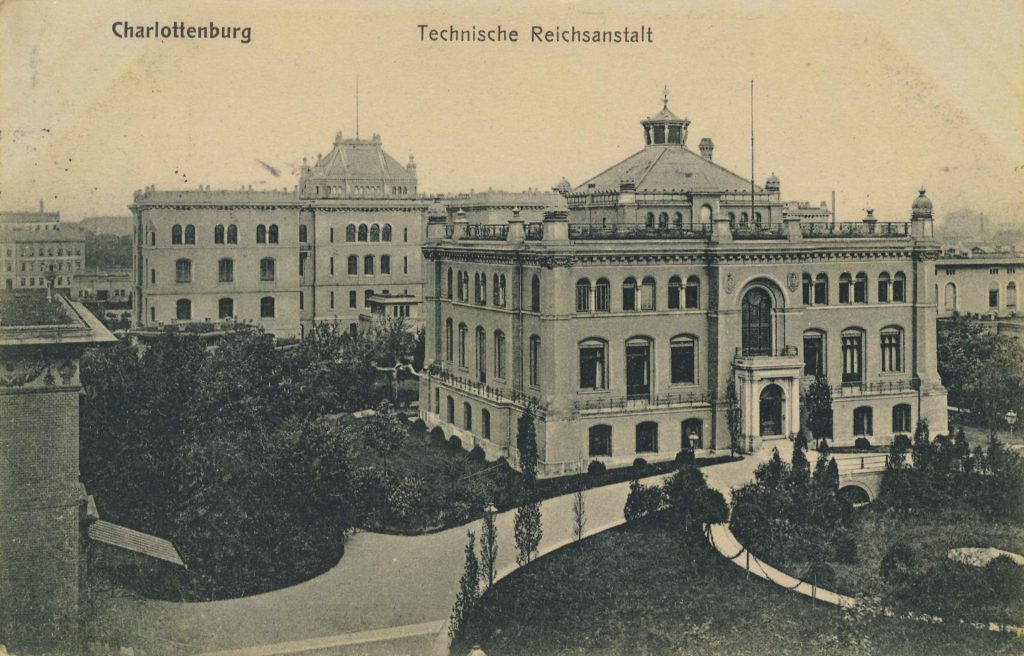
Physikalische Technische Reichsanstalt (Charlottenburg, Berlin), an important academic research center created in 1887, partly with funds provided by the engineer and businessman Werner von Siemens. Wikimedia.
It was not an easy task to establish the set of voices authorised to deal with problems related to industrial production, public health or food. A university degree in science, technology or medicine was not a guarantee of success in solving industrial or agricultural problems. Many people with experience and expertise in these fields lacked these qualifications and even formal training. For people who were inexperienced in these matters, who had to make the necessary decisions, it was not easy to select an advisory team. As the sociologist Steven Shapin has pointed out, the sources of legitimacy of the experts are varied and changing: university degrees, professional careers, field experience, technologies managed, social origins, liberal education, links with the predominant powers, good financial position, etc. Some of these ingredients can be decisive in certain environments and completely useless as a source of legitimacy in others. The judicial context was one of the first in which these tensions were seen, given the long tradition of the presence of expert knowledge in courts. Transformation into legal codes, procedural methods and standards of proof were of great importance in many countries in the nineteenth century, creating new forms of collaboration between science and justice that led to new problems and uncertainties in the management of expert knowledge.
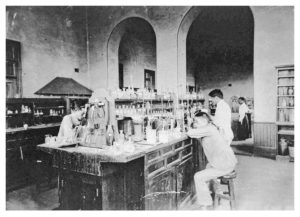
Japanese students in a chemical laboratory at the Imperial University of Tokyo in the late 19th century. Y. Kikuchi.
Changes in scientific careers, together with the presence of science in new fields, were also associated with changes in the scientific disciplines and the development of specialisation. A scientific discipline requires particular content, more or less defined and structured; its own literature (textbooks and specialised journals), an institutional territory (faculties, research centres, laboratories, etc.), external recognition and a shared collective memory, as well as certain values about the working methods and problems to be solved. Disciplines can have very different settings depending on the school or academic environment and their geographical or cultural context. They are sociocultural entities in constant transformation: they are born, they grow, develop, compete and often become extinct or give rise to new ones, often through hybridisation or segmentation processes that produce new specialities.
During the nineteenth century, the structure of the disciplines (chemistry, biology, geology, physics, etc.) that would form the core of science during the first half of twentieth century was produced. This structure, apparently so solid for the members of the disciplinary communities, underwent a crisis in the second half of the twentieth century, with the emergence of interdisciplinary areas and new fields of research, based on multidisciplinary collaboration, which challenged any fit in the disciplines of the nineteenth century. Currently, although the word he coined has survived, William Whewell would have trouble recognising people working on scientific tasks, as well as identifying the very nature of these activities. Conversely, the uncritical adoption of the current disciplinary structure for the study of the past of science can also lead to significant confusion. The nineteenth century, with its great changes in all the aforementioned areas, must serve to prevent us from the excesses of presentism in the study of the history of science, technology and medicine.
José Ramón Bertomeu Sánchez
IILP-UV
How to cite this paper:
Bertomeu Sánchez, José Ramón. William Whewell and science as a liberal profession. Sabers en acció, 2020-12-31. https://sabersenaccio.iec.cat/en/william-whewell-and-science-as-a-liberal-profession/.
Find out more
You can find further information with the bibliography and available resources.
Recommended reading
Bowler, Peter.; Morus, Iwan. Panorama General de la Ciencia Moderna. Barcelona: Crítica; 2007.
Cahan, Daniel ed. From Natural Philosophy to the Sciences: Writing the History of Nineteenth-Century Science. Chicago: University Press; 2003.
Fara, Patricia. Breve Historia de La Ciencia. Barcelona: Ariel; 2009.
Morus, Iwan Rhys. When Physics Became King. Chicago: University of Chicago Press; 2005.
Nye, Mary J. Before Big Science. The Pursuit of Modern Chemistry and Physics 1800-1940. Cambridge: Harvard University Press; 1996.
Nye, Mary J. ed. The Cambridge History of Science. Volume 5, The Modern Physical and Mathematical Sciences. Cambridge: University Press; 2002.
Studies
Bensaude-Vincent, Bernadette; Simon, Jonathan Química: La ciència impura. València : PUV; 2015.
Bertomeu Sánchez, José Ramón, Duncan Thorburn Burns, and Brigitte Van Tiggelen, eds. 2008. Neighbours and Territories: The Evolving Identity of Chemistry. Louvain-la-neuve: Mémosciences.
Cahan, Daniel ed. From Natural Philosophy to the Sciences: Writing the History of Nineteenth-Century Science. Chicago: University Press; 2003.
Collins, Harry; Evans, Richard. Rethinking Expertise. Chicago: University Press; 2007.
Cunningham, Andrem. “De-Centring the ‘Big Picture’: The Origins of Modern Science and the Modern Origins of Science.” British Journal for the History of Science. 1993; 26: 407–32.
García-Belmar, Antonio, ed. “Sites of Chemistry in the Nineteenth Century.” Ambix. 2014; 61 (2): 109–14.
Heilbron, John, ed. Oxford Companion to the History of Modern Science. New York: Oxford University Press; 2003.
Knight, David; Kragh, Helge. The Making of the Chemists. The Social History of Chemistry in Europe, 1789-1914. Cambridge: University Press; 1998.
Kikuchi, Yoshiyuki. Anglo-American Connections in Japanese Chemistry. The Lab as Contact Zone. New York: Palgrave, 2013.
Livingstone, David; Withers, Charles, eds. Geographies of Nineteenth-Century Science. 526. Chicago: University Press, 2011.
Morus, Iwan Rhys. 2005. When Physics Became King. Chicago: University of Chicago Press.
Nieto-Galan, Agustí. 2011. Los Públicos de La Ciencia: Expertos Y Profanos a Través de La Historia. Madrid: Marcial Pons.
Yeo, Richard Defining Science: William Whewell, Natural Knowledge, and Public Debate in Early Victorian Britain. Cambridge: University Press; 1993.
Sources
Bernard, Claude. Introducción al estudio de la medicina experimental. Clásicos de la ciencia y la tecnología. Barcelona: Crítica; 2005.
Carnot, Sadi et al. Escrits fonamentals sobre el segon principi de la termodinàmica. Col.lecció clàssics de la ciència. Barcelona: Institut d’Estudis Catalans; 1999.
Carnot, Sadi. Reflexiones sobre la potencia motriz del fuego y sobre lasmáquinas adecuadas para desarrollar esta potencia: y otras notas de carácter científico. Madrid: Alianza; 1987.
Faraday, Michael. La historia química de una vela. Madrid: Nivola; 2014.
Leicester, Henry; Klickstein, Herver. A Source Book in Chemistry, 1400-1900. Cambridge: University Press; 1952.
García Belmar, Antonio; Pellón González, Inés; Rocke, Alan (eds.). El atomismo en química. Un Nuevo Sistema de Filosofía Química de John Dalton. Alicante: Publicaciones de la Universidad de Alicante; 2012.
Papp, Desiderio. Historia de la física: desde Galileo hasta los umbrales del siglo XX. Madrid: Espasa-Calpe; 1945.
Maxwell, James Clerk, Escritos científicos. Madrid: Consejo Superior de Investigaciones Científicas; 1998.
Mendeléiev, Dmitri I.; William B. Jensen. Mendeleev on the periodic law: selected writings: 1869-1905. Mineola: Dover; 2002 [ediciones de estos textos en catalán de la Societat Catalana de Química].
Planck, Max. El coneixement del mon físic. Barcelona: Edicions 62; 1984.
Planck, Max. Autobiografía científica y últimos escritos. Madrid: Nivola libros y ediciones; 2000.
Websites and other resources
Carmen Giunta, ‘Classic Papers of the History of Chemistry’. [Accessed 30 April 2017] Available here.

